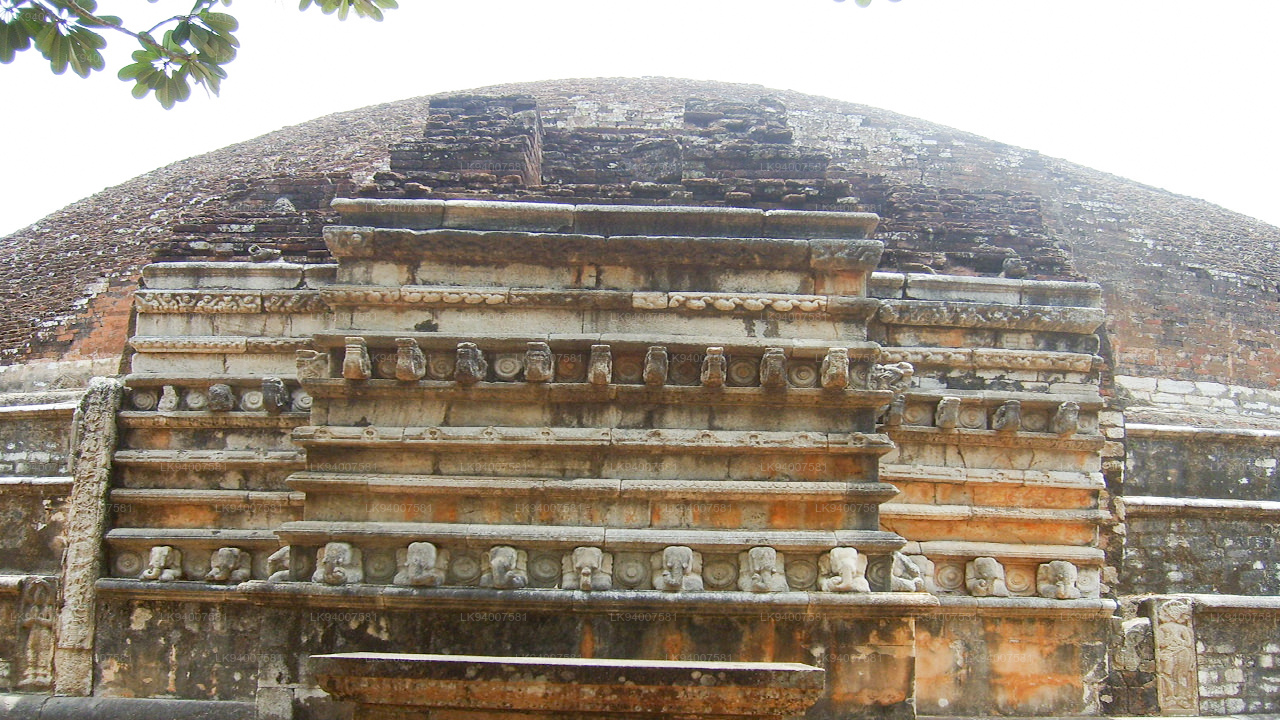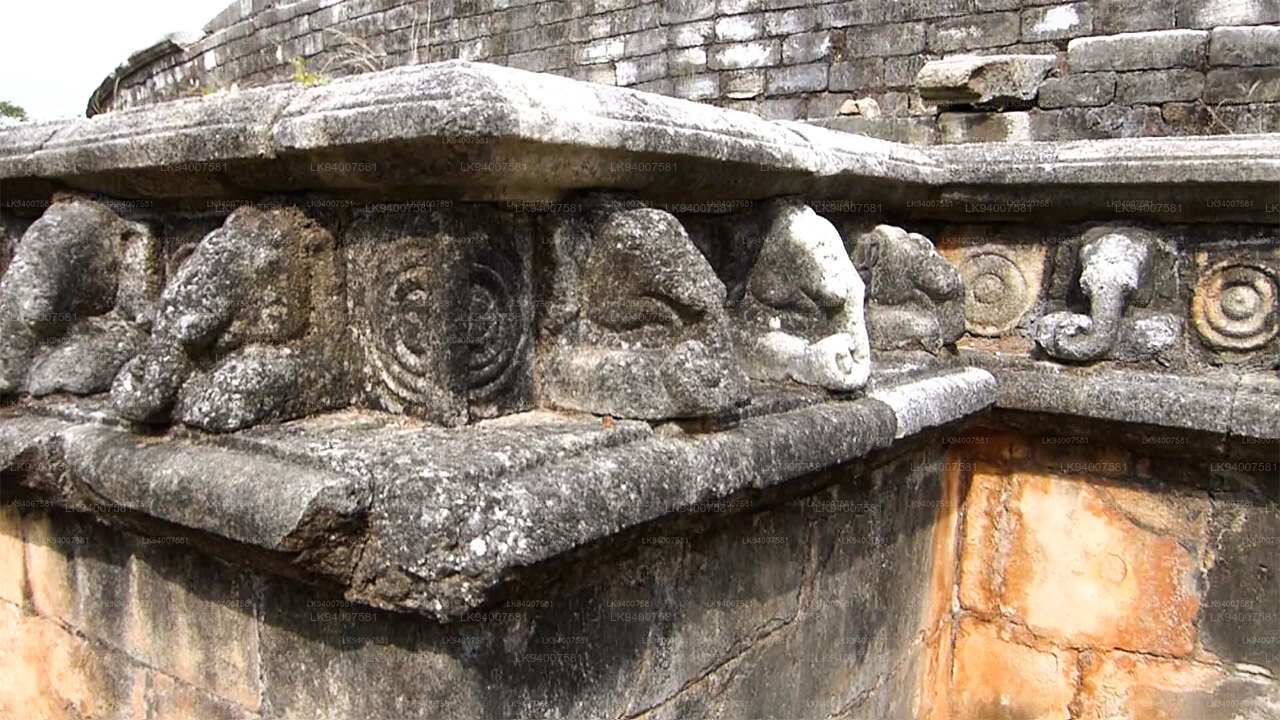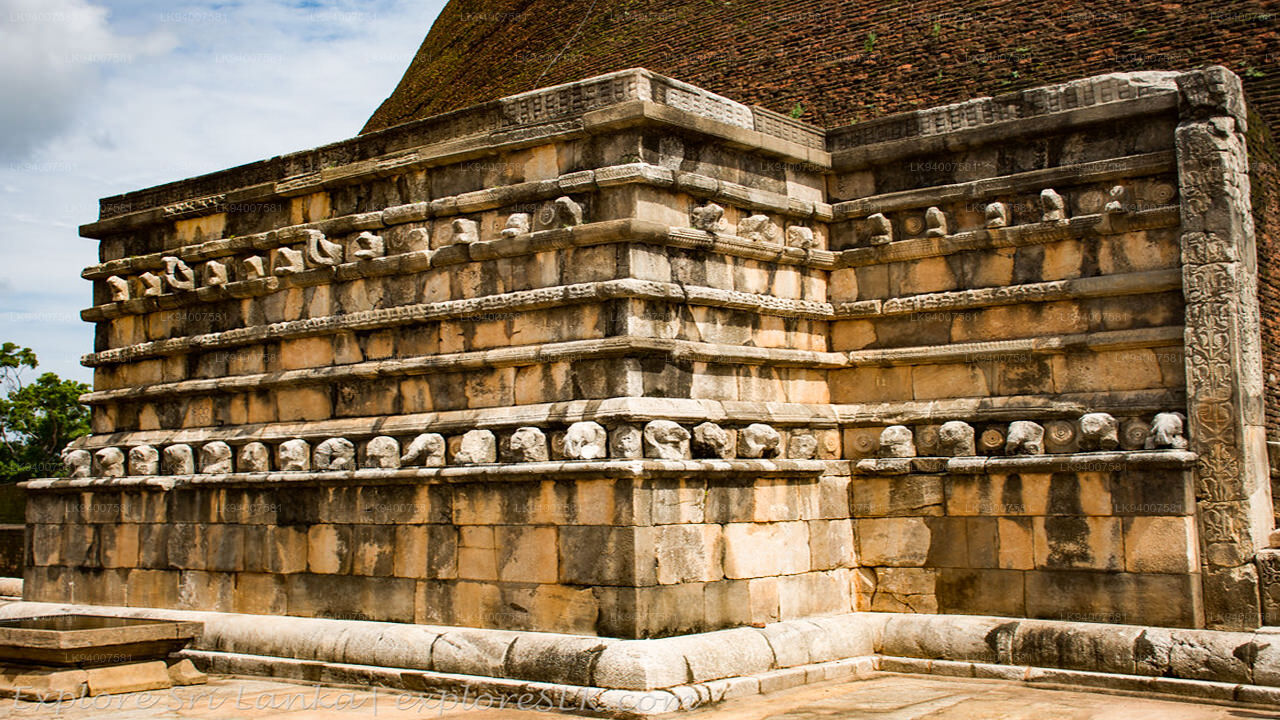
Città di Anuradhapura
Anuradhapura appartiene alla Provincia Centro-Settentrionale dello Sri Lanka. Anuradhapura è una delle antiche capitali dello Sri Lanka, famosa per le sue rovine ben conservate dell'antica civiltà lankese. La città, oggi Patrimonio dell'Umanità UNESCO, si trova 205 km a nord dell'attuale capitale Colombo, in Sri Lanka.
Kantaka Stupa
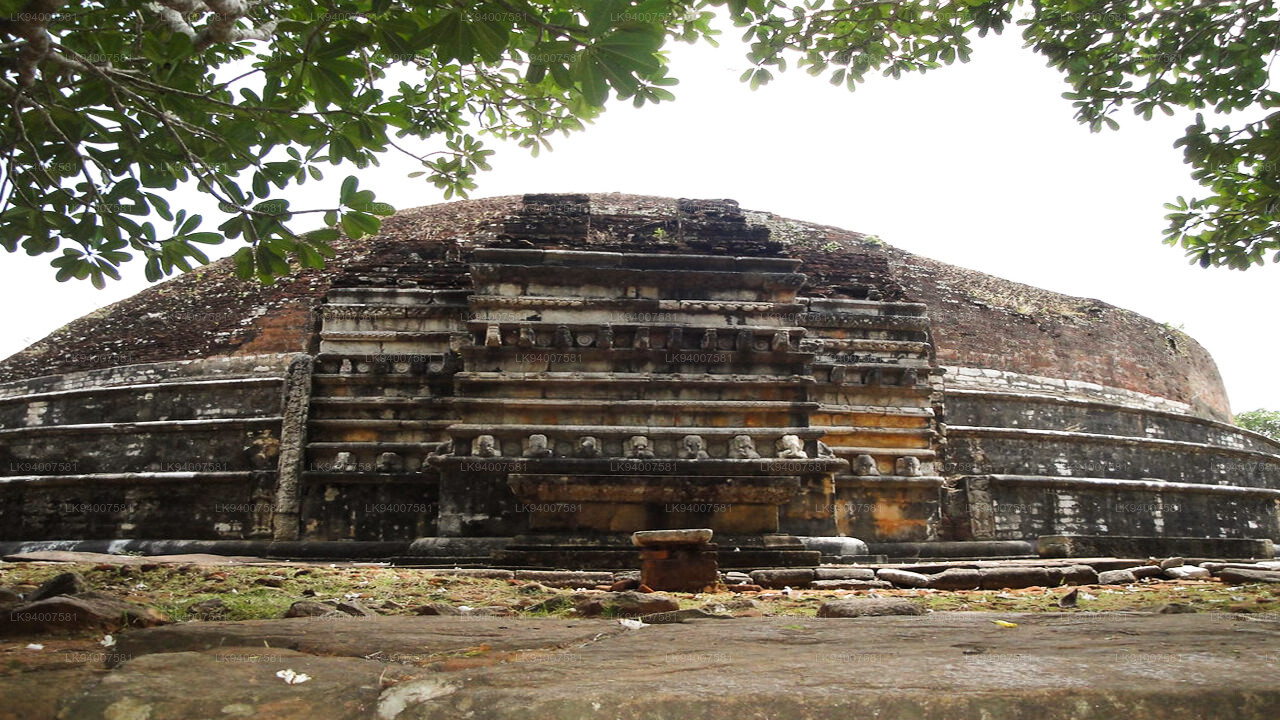
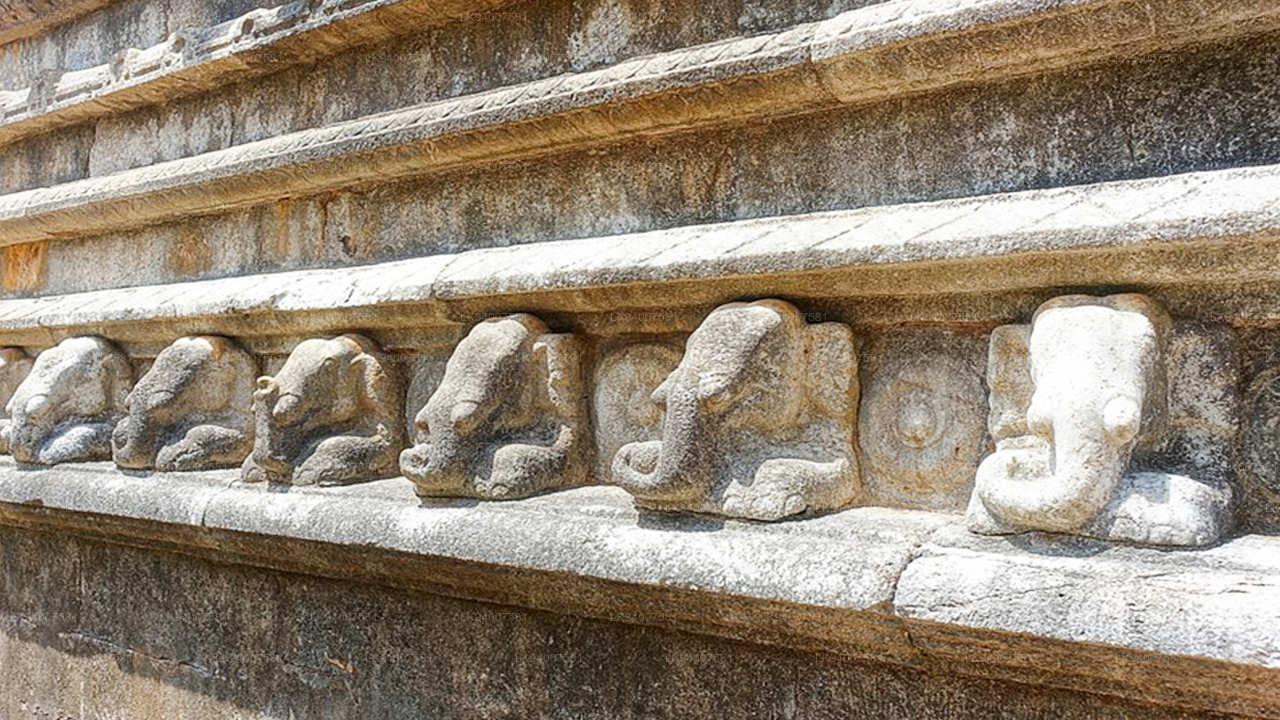
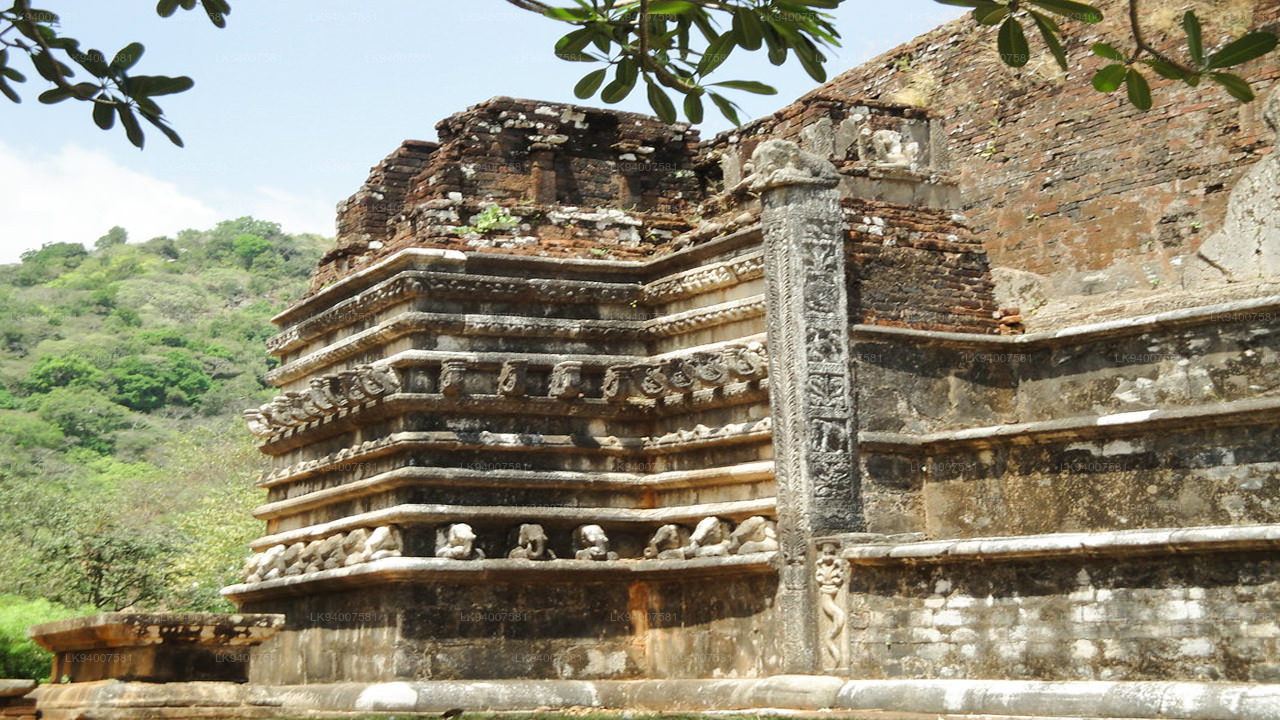
Kantaka Stupa
Kantaka Stupa is a circular stupa having a base circumference of about 425 feet. It has three stepped rims. It has four frontispieces in the four cardinal directions. The frontispiece is called Vaahalkada. All the Vaahalkadas are decorated with sculptures of dwarfs, animals, human, divine figures and floral motifs. One of the most important of the sculptures on the Kantaka Cethiya Vaahalkada is the elephant headed God with two arms. The Saivites call it Ganapati or Ganeesaa. The Ganapati sculptures in the Vaahalkadas of the Kantaka Cetiya have created confusion among the archaeologists and historians. No one could not explain the connection between Ganapati God and Buddhism. Thus, the Sinhalese historians and archaeologists have tried to give some imaginary interpretation.
The four vahaalkadas facing the four cardinal points have different animals on the top of the square pillars - the elephant on the east, the lion on the north, the horse on the west and the bull on the south.
Most of the Indian and Sri Lankan archaeologists believe that there is a symbolic relationship between these animals and the four cardinal directions. But, they differ in associating a particular animal with a particular direction.
History Of Kantaka Stupa
The Sinhalese archaeologists and historians say that King Suratissa have built this Stupa. The Pesavalalu and the frontispiece have been preserved to a great extent. There are ruins of the stupa which are 40 ft (12 m) in height. The monks would have resided in the caves close to the stupa. As this stupa was renovated by King Lajjitissa. There is no doubt that this belongs to the 1st century B.C.
Informazioni sul distretto di Anuradhapura
Anuradhapura appartiene alla Provincia Centro-Settentrionale dello Sri Lanka. Anuradhapura è una delle antiche capitali dello Sri Lanka, famosa per le sue rovine ben conservate dell'antica civiltà cingalese. La città, ora Patrimonio dell'Umanità UNESCO, si trova 205 km a nord dell'attuale capitale Colombo, in Sri Lanka. Nella città sacra di Anuradhapura e nelle sue vicinanze si trovano numerose rovine. Le rovine consistono in tre classi di edifici: dagoba, edifici monastici e pokuna (stagni). La città possedeva alcuni dei sistemi di irrigazione più complessi del mondo antico; situata nella zona arida del paese, l'amministrazione costruì numerose cisterne per irrigare i terreni. La maggior parte dei civili è cingalese, mentre nel distretto vivono anche tamil e mori dello Sri Lanka.
Informazioni sulla provincia centro-settentrionale
La Provincia Centro-Settentrionale, la più grande del paese, copre il 16% della superficie totale del paese. La Provincia Centro-Settentrionale è composta da due distretti chiamati Polonnaruwa e Anuradhapure. Anuradhapura è il distretto più grande dello Sri Lanka. La sua superficie è di 7.128 km². La Provincia Centro-Settentrionale ha numerose potenzialità per gli investitori che desiderano avviare le proprie attività, in particolare nei settori dell'agricoltura, dell'industria agroalimentare e dell'allevamento. Oltre il 65% della popolazione della Provincia Centro-Settentrionale dipende dall'agricoltura di base e dall'industria agroalimentare. La Provincia Centro-Settentrionale è anche chiamata "Wew Bendi Rajje" perché nella provincia si trovano più di 3.000 serbatoi di medie e grandi dimensioni. Sri Maha Bodiya, Ruwanweli Seya, Thuparama Dageba, il monastero di Abayagiri, Polonnaruwa Rankot Wehera e Lankathilake sono luoghi di interesse.

